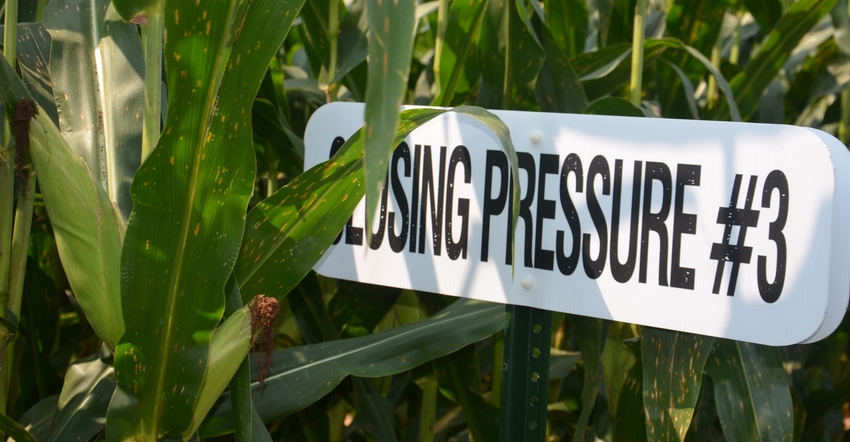
Where do you set closing wheel pressure on your corn planter? In the first notch? In the fourth notch? Does it even matter where you set it?
Those may not seem like loaded questions, but some people would argue they are more involved than you might think. First, the fact that you can talk about which notch you choose without mentioning color of planter indicates most planters use the same, simple closing wheel pressure system. It hasn’t changed much over several decades.
That is, until now. Precision Planting introduced a new closing wheel system with downforce adjustment, which it’s testing intensely this growing season.
Closing wheel tests
Meanwhile, Darren Goebel, agronomist and manager of global agronomy and farm solutions for Agco, notes closing wheel pressure is one test his company has conducted in its Crop Tour program over the past few seasons.
“The program includes 20 sites across the Corn Belt,” he says. “We’ve done various tests at multiple locations on simple questions related to planting. Our goal is showing farmers that how you set your planter makes a big difference. Your goal should be uniform emergence.”
One site where a closing wheel study was conducted was just outside Union City, Ohio, sister city to Union City, Ind. Goebel visited the site after pollination last summer to help farmers evaluate what they were seeing when they looked at various demonstrations.
Closing wheel aggressiveness was compared at seven sites, with the first setting being the lightest and the fourth setting the heaviest. The only major yield difference was a decrease at the most aggressive setting, Goebel says. Average yield varied from 228 bushels per acre at setting 2 to 222 at setting 4. The first and second settings were virtually the same, with setting 1 at 227 bushels per acre. Setting 3 averaged 225 bushels per acre.
All these trials were in conventional tillage. In no-till, it’s often necessary to go to the heaviest pressure to properly close the slot over the seed, Agco spokespeople say.
What’s their recommendation based on observations in demonstration plots across the Corn Belt over time? Use the minimum pressure required to completely close the furrow in order to maximize emergence.
How to adjust closing wheels
Goebel recommends this procedure: First, do some digging behind the planter and make sure the seed is at the depth you’ve selected. Also, make sure it’s firmed into the soil. You may elect to run Keeton Seed Firmers to help with this process.
Goebel notes that White planters are designed so seed firmers attach easily. The fact is, they attach without issue on most planters.
If the seed is at the right depth and firmed into the trench, back off closing wheel pressure to the correct setting, experts recommend. Make sure closing wheels are properly aligned, too. You may want to dig a cross-section of a seed trench, perhaps in each row, to make sure you’re getting the placement you want.
About the Author(s)
You May Also Like




